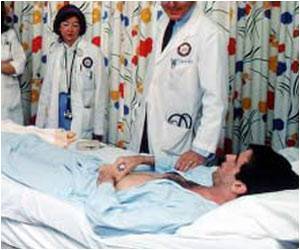According to a study nearly 20 percent of hospitalizations resulted in at least 1 acute care encounter within the 30 days following discharge.

Anita A. Vashi, M.D., M.P.H., of the Yale University School of Medicine, New Haven, Conn., and colleagues conducted a study to determine the degree to which ED visits (treat-and-release encounters) and hospital readmissions contribute to overall use of acute care services within 30 days of hospital discharge. The study included patients ages 18 years or older (average age: 53 years) who were discharged between July 2008 and September 2009 from acute care hospitals in 3 large, geographically diverse states (California, Florida, and Nebraska) with data recorded in the Healthcare Cost and Utilization Project state inpatient and ED databases. The majority of patients were female (53.5 percent) and approximately half of the patients were white (48.0 percent).
The final study group included 5,032,254 index hospitalizations among 4,028,555 patients. The researchers found that of all the hospitalizations in the study, 17.9 percent resulted in at least 1 acute care encounter in the 30 days following discharge; 7.5 percent of discharges were followed by at least 1 ED encounter; and 12.3 percent by at least 1 readmission. For every 1,000 discharges, there were 97.5 ED treat-and-release visits and 147.6 hospital readmissions in the 30 days following discharge. Visits to the ED comprised 39.8 percent of the post-discharge acute care encounters. Also, approximately one-third of hospital-based acute care use occurred during the first 7 days following hospital discharge, and more than half occurred during the first 14 days postdischarge.
There was substantial variability in use rates of acute care across the 470 different index discharge conditions. The number of ED treat-and-release visits ranged from a low of 22.4 encounters/1,000 discharges for breast malignancy to a high of 282.5 encounters/1,000 discharges for uncomplicated benign prostatic hypertrophy.
"Although patients returned to the ED for a variety of reasons, for the highest volume conditions, ED treat-and-release visits were always related to the index hospitalization," the authors write.
"In conclusion, hospital-based acute care encounters are frequent among patients recently discharged from an inpatient setting. An improved understanding of how the ED setting is best used in the management of acute care needs—particularly for patients recently discharged from the hospital—is an important component of the effort to improve care transitions. The use of hospital readmissions as a lone metric for postdischarge health care quality may be incomplete without considering the role of the ED. Just as the Patient Protection and Affordable Care Act requires the development of programs to reduce readmissions, further initiatives are necessary to understand the drivers of postdischarge ED use and the clinical and financial efficiency associated with providing such acute care in the ED."(JAMA. 2013;309(4):364-371;
Advertisement
Source-Eurekalert











